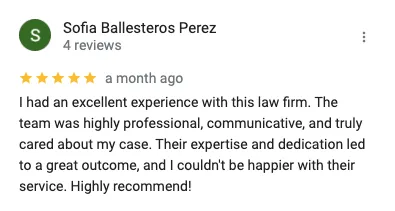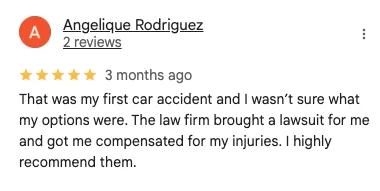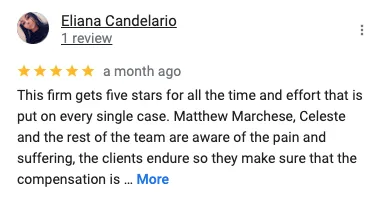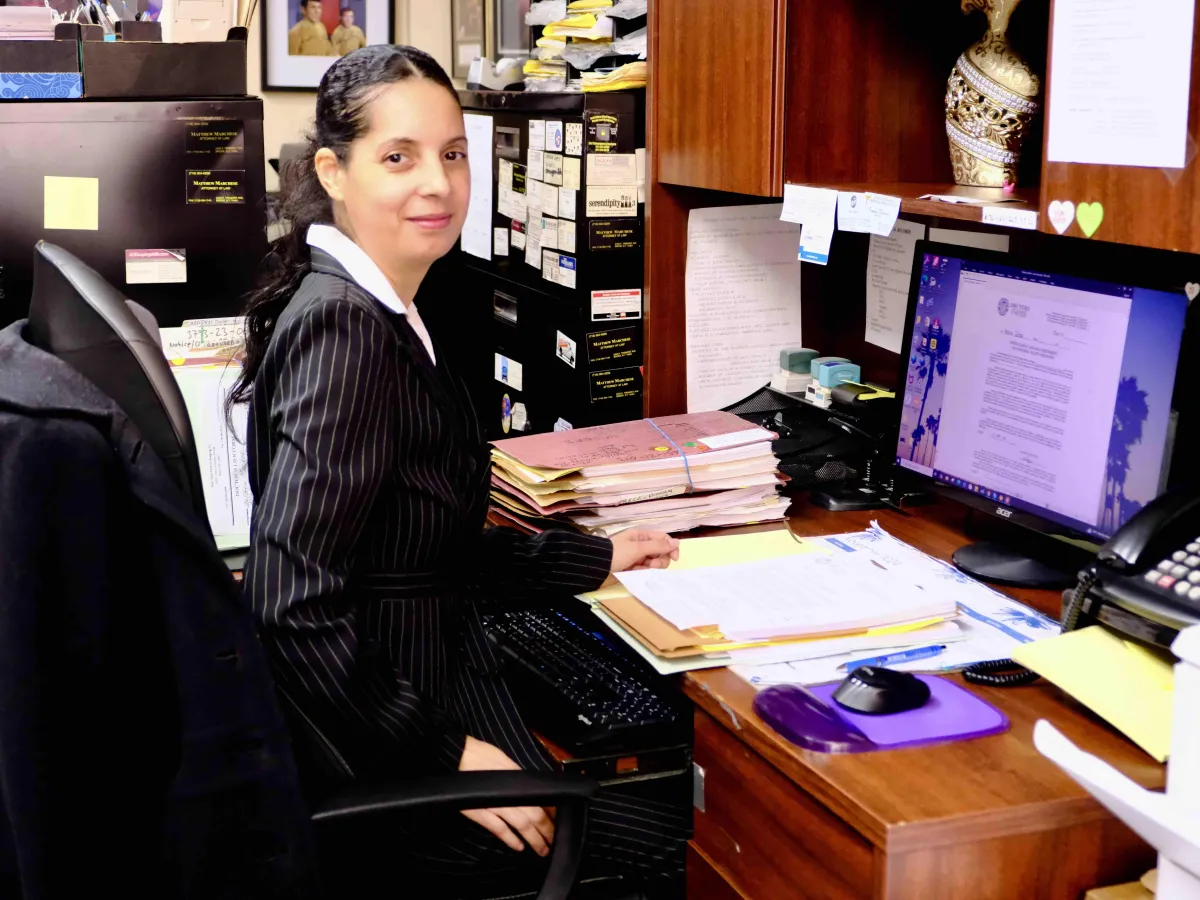NYCHA Accident Lawyer in the Bronx
Ceiling collapse. Broken stairs. Filthy hallways. We fight for NYCHA tenants who got hurt.
From Matt: Hey, It's Matt Marchese from MyBronxLawyer.com. If you got hurt in a NYCHA building — broken stairs, ceiling collapse, no lights, or filthy hallways — you’re not the only one. We’ve helped tenants from Edenwald to Soundview get justice.These cases take real work — and a lot of lawyers won’t touch them. But we don’t back off. If NYCHA ignored a danger in your building and someone got hurt, we’ll go after them the right way.
Injuries Inside NYCHA Buildings and Properties
Falls, broken doors, collapsing ceilings, and stairwell injuries are common in NYCHA buildings. Tenants often report these hazards, but repairs can take months — or never come. If you were hurt in a public housing building or development, you may have a valid claim against the City of New York.
What Counts as a NYCHA Injury Case?
Not every injury in a housing building becomes a case — but many do. You may have a claim if the accident happened because something was broken, leaking, dangerous, or left unrepaired. That includes:
- Leaking pipes or radiators causing slippery floors
- Collapsing ceilings or walls with visible damage
- Broken stairwells, railings, or lights
- Loose tiles or cracked flooring
- Elevator accidents or door malfunctions
- Injuries to children due to unsafe conditions
We’ve also seen serious injuries from falls in dark stairwells, unsecured rooftop doors, ice on sidewalks and areas where NYCHA ignored previous complaints. These cases are more common than most people realize.
Why Are NYCHA and City Cases More Complicated?
Injuries that happen on city property — including public housing — must follow strict rules. You often have just 90 days to file a Notice of Claim, and the city’s legal department will demand early documentation. Miss the deadline, and the case may be gone. For more about filing timelines and government claims, see our FAQ page.
Can NYCHA Tenants Sue for Injuries?
Yes — if the injury was caused by a hazardous condition that wasn’t fixed in time. That includes broken stair rails, dark hallways, and persistent leaks. The key is showing NYCHA had enough time to fix it or should’ve known it was dangerous. We’ve handled similar situations to those on our Slip and Fall page.
What If I’ve Reported the Problem Before?
If you or other tenants previously reported the condition (through 311, tenant meetings, or repair tickets), that strengthens your case. It shows NYCHA was warned but didn’t fix it. Even if no formal complaint was made, we may be able to find prior records or witness statements.
What Kinds of Injuries Happen?
We’ve seen clients suffer everything from fractured wrists to back injuries and surgery after falling in dark hallways or slipping on flooded lobby floors. Collapsing ceilings can cause head and neck trauma. Elevator and stairwell failures lead to serious orthopedic issues. If the injury changed your day-to-day life, it’s worth reviewing.
Does It Matter Which NYCHA Building I Live In?
No — but certain buildings have higher incident rates and more documented neglect. That includes developments in the Bronx like Soundview, Castle Hill, Jackson Houses, Patterson Houses, Edenwald, and others. If you live in one of these or anywhere else in NYCHA housing, the same legal deadlines and rights apply.
Do I Need a Police or EMS Report?
Not always. NYCHA or EMS reports can help, but we’ve opened strong cases without them by gathering witness statements, medical records, and photo evidence. If NYPD did respond, you can get your official report here.
What If I Waited to Get Treated?
It’s still possible to pursue a case. If the pain started or got worse after a day or two, and you followed up with a doctor, that record still counts. We’ve helped clients document and win cases even when the initial treatment was delayed. If you waited before seeing a doctor, we explain what to do next on our insurance guide.
Should I Go to Urgent Care After a Housing Accident?
Yes — especially if you didn’t go to the ER or you're still in pain. Urgent care clinics are often the first step in documenting an injury. Even days later, it matters. Learn what to expect, what to say, and how to protect your case on our Urgent Care After an Accident page.
Helpful Info
What Should You Do
After Visiting Urgent Care?
If you’ve been to urgent care after a car accident or fall, you’re not alone — it’s one of the most common first steps. But urgent care notes alone aren’t always enough. Here’s what matters next, and how to protect your health and case.
Learn more →Learn More
Explore specific legal issues tied to real Bronx neighborhoods and crash types. These resources help explain what to expect if you were injured in one of these common local scenarios.
Call 7 days a week 9am-9pm.
LET'S TALK
VISIT US
© 2025 Matthew Marchese P.C. All Rights Reserved
Law Firm of Matthew Marchese, 2403 East Tremont Avenue, Bronx, NY, 10461
The information on this website is for general information purposes only. Nothing on this site should be construed as legal advice in any particular case. The information does not create an attorney-client relationship. Attorney advertising. Prior results do not guarantee a similar outcome.
These cases take real work — and a lot of lawyers won’t touch them. But we don’t back off. If NYCHA ignored a danger in your building and someone got hurt, we’ll go after them the right way.
Injuries Inside NYCHA Buildings and Properties
Falls, broken doors, collapsing ceilings, and stairwell injuries are common in NYCHA buildings. Tenants often report these hazards, but repairs can take months — or never come. If you were hurt in a public housing building or development, you may have a valid claim against the City of New York.
What Counts as a NYCHA Injury Case?
Not every injury in a housing building becomes a case — but many do. You may have a claim if the accident happened because something was broken, leaking, dangerous, or left unrepaired. That includes:
- Leaking pipes or radiators causing slippery floors
- Collapsing ceilings or walls with visible damage
- Broken stairwells, railings, or lights
- Loose tiles or cracked flooring
- Elevator accidents or door malfunctions
- Injuries to children due to unsafe conditions
We’ve also seen serious injuries from falls in dark stairwells, unsecured rooftop doors, ice on sidewalks and areas where NYCHA ignored previous complaints. These cases are more common than most people realize.
Why Are NYCHA and City Cases More Complicated?
Injuries that happen on city property — including public housing — must follow strict rules. You often have just 90 days to file a Notice of Claim, and the city’s legal department will demand early documentation. Miss the deadline, and the case may be gone. For more about filing timelines and government claims, see our FAQ page.
Can NYCHA Tenants Sue for Injuries?
Yes — if the injury was caused by a hazardous condition that wasn’t fixed in time. That includes broken stair rails, dark hallways, and persistent leaks. The key is showing NYCHA had enough time to fix it or should’ve known it was dangerous. We’ve handled similar situations to those on our Slip and Fall page.
What If I’ve Reported the Problem Before?
If you or other tenants previously reported the condition (through 311, tenant meetings, or repair tickets), that strengthens your case. It shows NYCHA was warned but didn’t fix it. Even if no formal complaint was made, we may be able to find prior records or witness statements.
What Kinds of Injuries Happen?
We’ve seen clients suffer everything from fractured wrists to back injuries and surgery after falling in dark hallways or slipping on flooded lobby floors. Collapsing ceilings can cause head and neck trauma. Elevator and stairwell failures lead to serious orthopedic issues. If the injury changed your day-to-day life, it’s worth reviewing.
Does It Matter Which NYCHA Building I Live In?
No — but certain buildings have higher incident rates and more documented neglect. That includes developments in the Bronx like Soundview, Castle Hill, Jackson Houses, Patterson Houses, Edenwald, and others. If you live in one of these or anywhere else in NYCHA housing, the same legal deadlines and rights apply.
Do I Need a Police or EMS Report?
Not always. NYCHA or EMS reports can help, but we’ve opened strong cases without them by gathering witness statements, medical records, and photo evidence. If NYPD did respond, you can get your official report here.
What If I Waited to Get Treated?
It’s still possible to pursue a case. If the pain started or got worse after a day or two, and you followed up with a doctor, that record still counts. We’ve helped clients document and win cases even when the initial treatment was delayed. If you waited before seeing a doctor, we explain what to do next on our insurance guide.
Should I Go to Urgent Care After a Housing Accident?
Yes — especially if you didn’t go to the ER or you're still in pain. Urgent care clinics are often the first step in documenting an injury. Even days later, it matters. Learn what to expect, what to say, and how to protect your case on our Urgent Care After an Accident page.
Learn More
Explore specific legal issues tied to real Bronx neighborhoods and crash types. These resources help explain what to expect if you were injured in one of these common local scenarios.
Helpful Info
What Should You Do
After Visiting Urgent Care?
If you’ve been to urgent care after a car accident or fall, you’re not alone — it’s one of the most common first steps. But urgent care notes alone aren’t always enough. Here’s what matters next, and how to protect your health and case.
Learn more ↗ABOUT US
We truly believe in putting our clients first. We are part of the community we serve and we understand the challenges and needs of our clients better than any other law firm.
GET IN TOUCH
Mon - Fri | 9:00 AM - 5:00 PM
Sat - Sun | Closed
We answer the phone between 9am-9pm
QUICK LINKS
© 2025 Matthew Marchese P.C. All Rights Reserved
Law Firm of Matthew Marchese, 2403 East Tremont Avenue, Bronx, NY, 10461
The information on this website is for general information purposes only. Nothing on this site should be construed as legal advice in any particular case. The information does not create an attorney-client relationship. Attorney advertising. Prior results do not guarantee a similar outcome.





